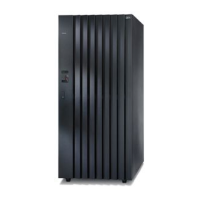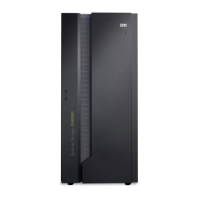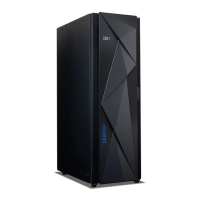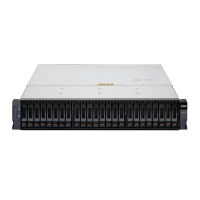Next, find a disk or disks that have the available space. In this case, hdisk1 has 515
free physical partitions, which is more than the required space of 399 physical
partitions.
The only situation that is specific to rootvg is if the desired disk contains the boot
image. Generally, this is the logical volume called hd5. From the following partial
list of lsvg -l rootvg, this logical volume has a type of boot:
LV NAME TYPE Ps PPs PVs LV STATE MOUNT POINT
hd5 boot 1 1 1 closed/syncd N/A
To determine if the boot image is on the disk that you want to migrate, run the
lslv -l command. The following example displays the output when you issue the
lslv -l command:
# lslv -l hd5
hd5:N/A
PV COPIES IN BAND DISTRIBUTION
hdisk0 001:000:000 100% 001:000:000:000:000
In this case, the boot image resides on the disk that you want to migrate. You must
first move the boot image with the migratepv -l command.
Using the direct copy method
Use the following information as a guide for how to use the direct copy method to
migrate data.
There are times when you must use the direct copy method to migrate data. While
this method uses the logical volume manager, the primary focus is on the use of
the UNIX find command and the cpio command. The find command generates the
list of files to be migrated. The cpio command migrates the files on the list.
The easiest way to produce the list of files is with the UNIX find command. Pipe
its standard output to the standard input of the cpio command. The following
output shows a typical example of using the cpio command to move data.
# mount /dev/lv00 /mnt
# cd /data
# find . -print | cpio -pdmuv /mnt
.
.
.
# umount /mnt
# umount /data
# mount /dev/lv00 /data
For the example above, the following considerations can apply:
v Assume that you made a file system on the /dev/lv00 logical volume. AIX LVM
uses this file system to view part or all the virtual disks that the storage unit has
made available to the system.
v Mount the logical volume on a temporary mount point, in this case/mnt.
v Change directories to the directory at the top of the file system that you want to
move (cd/data).
v Use the find command to produce a list of file names, which a pipe (|) passes
to the cpio command.
146 DS8000 User’s Guide
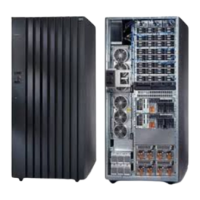
